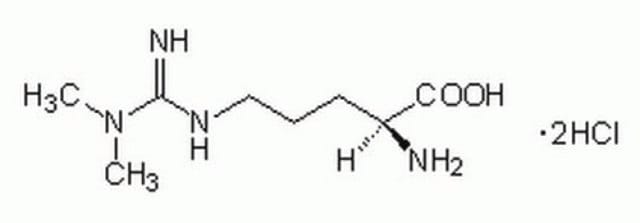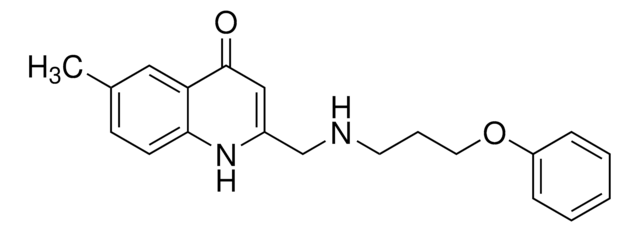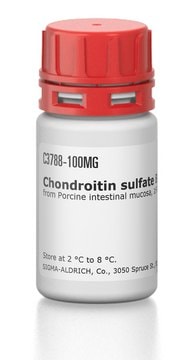S6951
Surfen hydrate
≥98% (HPLC)
Synonym(e):
(bis-2-methyl-4-amino-quinolyl-6-carbamide hydrate, 1,3-Bis(4-amino-2-methyl-6-quinolyl)urea hydrate, Aminokinuride, Aminoquincarbamide, Aminoquinuride, N,N′-Bis(4-amino-2-methyl-6-quinolyl)urea, NSC 12155
About This Item
Empfohlene Produkte
Qualitätsniveau
Assay
≥98% (HPLC)
Form
powder
Farbe
white to beige
Löslichkeit
DMSO: 2 mg/mL, clear
Lagertemp.
2-8°C
SMILES String
O.Cc1cc(N)c2cc(NC(=O)Nc3ccc4nc(C)cc(N)c4c3)ccc2n1
InChI
1S/C21H20N6O.H2O/c1-11-7-17(22)15-9-13(3-5-19(15)24-11)26-21(28)27-14-4-6-20-16(10-14)18(23)8-12(2)25-20;/h3-10H,1-2H3,(H2,22,24)(H2,23,25)(H2,26,27,28);1H2
InChIKey
UXYZYUHSZVKWTR-UHFFFAOYSA-N
Anwendung
Surfen hydrate has been used in the inhibition of multiple voltage-gated calcium channels in human embryonic kidney cells.
Biochem./physiol. Wirkung
H-Sätze
P-Sätze
Gefahreneinstufungen
Aquatic Chronic 4
Lagerklassenschlüssel
11 - Combustible Solids
WGK
WGK 3
Flammpunkt (°F)
Not applicable
Flammpunkt (°C)
Not applicable
Analysenzertifikate (COA)
Suchen Sie nach Analysenzertifikate (COA), indem Sie die Lot-/Chargennummer des Produkts eingeben. Lot- und Chargennummern sind auf dem Produktetikett hinter den Wörtern ‘Lot’ oder ‘Batch’ (Lot oder Charge) zu finden.
Besitzen Sie dieses Produkt bereits?
In der Dokumentenbibliothek finden Sie die Dokumentation zu den Produkten, die Sie kürzlich erworben haben.
Kunden haben sich ebenfalls angesehen
Unser Team von Wissenschaftlern verfügt über Erfahrung in allen Forschungsbereichen einschließlich Life Science, Materialwissenschaften, chemischer Synthese, Chromatographie, Analytik und vielen mehr..
Setzen Sie sich mit dem technischen Dienst in Verbindung.












